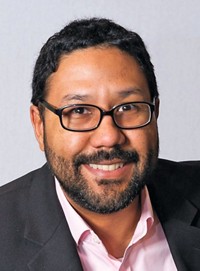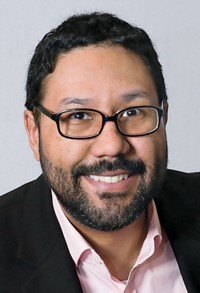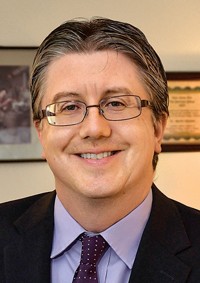Advertisement
Grab your lab coat. Let's get started
Welcome!
Welcome!
Create an account below to get 6 C&EN articles per month, receive newsletters and more - all free.
It seems this is your first time logging in online. Please enter the following information to continue.
As an ACS member you automatically get access to this site. All we need is few more details to create your reading experience.
Not you? Sign in with a different account.
Not you? Sign in with a different account.
ERROR 1
ERROR 1
ERROR 2
ERROR 2
ERROR 2
ERROR 2
ERROR 2
Password and Confirm password must match.
If you have an ACS member number, please enter it here so we can link this account to your membership. (optional)
ERROR 2
ACS values your privacy. By submitting your information, you are gaining access to C&EN and subscribing to our weekly newsletter. We use the information you provide to make your reading experience better, and we will never sell your data to third party members.
Comment
Looking ahead with the ACS Committee on Science
by Martin G. Kociolek, Chair, ACS Committee on Science
October 12, 2019
| A version of this story appeared in
Volume 97, Issue 40

What does the American Chemical Society Committee on Science (ComSci) do? If you ask the ACS membership, it’s likely that a large majority would have little idea, as did I before I began serving on the committee. What I learned is that the committee has a broad range of responsibilities that impact the society in multiple ways.
In early 2018, under the guidance of our past chair, Mark Cesa, ComSci developed its most recent strategic plan, which established a revised framework in which to accomplish its mission and vision. We developed an aspirational vision statement: “Engage the global/broader chemistry enterprise to build a better tomorrow.” How we accomplish that is reflected in our mission: “To identify new frontiers of chemistry, examine the scientific basis of and formulate public policies related to the chemical sciences, and recognize outstanding chemical scientists,” which reflects the committee’s primary charges.
One of our approaches to accomplishing our mission is to facilitate programming, particularly for emerging areas of science affecting the chemical enterprise. These areas include breakthroughs in science and technology, new applications of established science, and science devoted to emergent problems or critical needs. We achieve this through events such as symposia, workshops, and roundtables. Past topics have included academia-industry collaborations, hydraulic fracturing, forensics, and automated synthesis.
More recently, we have emphasized collaboration, exemplified by our partnership with NASA on a symposium at the ACS national meeting in Orlando, Florida, as well as with Accounts of Chemical Research on a symposium in San Diego on the journal’s “Water for Two Worlds” special issue. Moving forward, we hope to expand the scope of our collaborations, as we actively seek other journals, committees, and divisions with which to partner. We also look to take advantage of synergies between emerging areas and national meeting themes. Additionally, we hope to employ new ways to identify future trends and emerging areas using data analytics methods.
With regard to public policy, ComSci plays an important role in the development, review, and revision of ACS policy statements that cut across multiple areas of the chemical enterprise. These include statements on US business climate, forensic science, hydraulic fracturing, scientific integrity, sustainability, and visa restrictions. Furthermore, we always keep an eye on the development of new policies in areas significant to the chemical sciences.
ComSci also takes pride in its work to identify outstanding scientists and engineers in chemistry-related areas and prepare nominations for prestigious national and international awards. These include the National Medal of Science, National Medal of Technology and Innovation, Dreyfus Prize in the Chemical Sciences, Grand Prix de la Fondation de la Maison de la Chimie, and King Faisal International Prize. Looking ahead, we hope to expand our nomination portfolio to recognize the outstanding work of more scientists. Additionally, we hope to work more closely with divisions to identify qualified candidates for recognition.
Of course, if we are to make people aware of ComSci initiatives and accomplishments, we must communicate them. This is the goal of the ComSci Subcommittee on Communications. In addition to providing information about who we are and what we do through ACS, the committee is working to establish a presence on social media and related outlets. We also look forward to engaging with other committees and divisions to inform stakeholders, including ACS members, about our activities and initiatives.
When reflecting on our aspirational vision statement, I can’t help but think how well it aligns with initiatives within ACS to support the United Nations’ 17 sustainable development goals. With our multifaceted mission, ComSci is particularly well suited to support initiatives in all three of our primary charges. We see the programming possibilities resulting from collaborations with committees such as the Committee on Environmental Improvement, journals like ACS Sustainable Chemistry and Engineering, and groups like the ACS Green Chemistry Institute.
With regard to policies, as we update current policy statements up for review, we will begin to emphasize applicable sustainability aspects. We are also exploring the creation of new sustainability-focused statements. Additionally, we hope to build further awareness for sustainability by recognizing worthy chemists and identifying national and international sustainability-related awards and prizes for which we will submit nominations.
The future of ComSci is filled with possibilities. We look forward to building a more extensive network of collaborators to help achieve our vision of engaging the chemistry enterprise to build a better tomorrow. Contact me at kociolek@psu.edu.
Views expressed are those of the author and not necessarily those of C&EN or ACS.





Join the conversation
Contact the reporter
Submit a Letter to the Editor for publication
Engage with us on Twitter